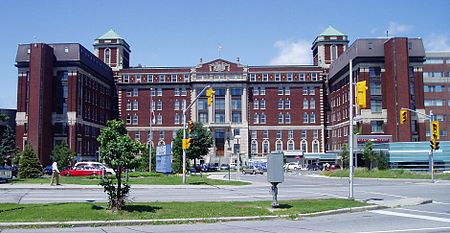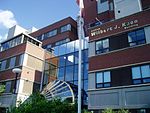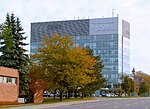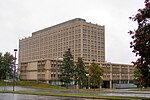Ottawa Civic Hospital
1924 establishments in OntarioHospitals established in 1924Hospitals in OttawaPages with non-numeric formatnum argumentsTeaching hospitals in Canada

The Ottawa Civic Hospital is one of three main campuses of The Ottawa Hospital – along with the General and Riverside campuses. With 549 beds (including the Heart Institute), the Civic Campus has the region's only adult-care trauma centre, serving Eastern Ontario, the Outaouais region of Quebec and eastern Nunavut. The Civic Campus also houses the University of Ottawa Heart Institute, which provides cardiac care for patients at The Ottawa Hospital. The Civic Campus opened in 1924 and is located at 1053 Carling Avenue in Ottawa, Ontario, Canada.
Excerpt from the Wikipedia article Ottawa Civic Hospital (License: CC BY-SA 3.0, Authors, Images).Ottawa Civic Hospital
Carling Avenue, (Old) Ottawa River
Geographical coordinates (GPS) Address External links Nearby Places Show on map
Geographical coordinates (GPS)
| Latitude | Longitude |
|---|---|
| N 45.3928 ° | E -75.7211 ° |
Address
The Ottawa Hospital - Civic Campus
Carling Avenue 1053
K1Y 4P6 (Old) Ottawa, River
Ontario, Canada
Open on Google Maps










